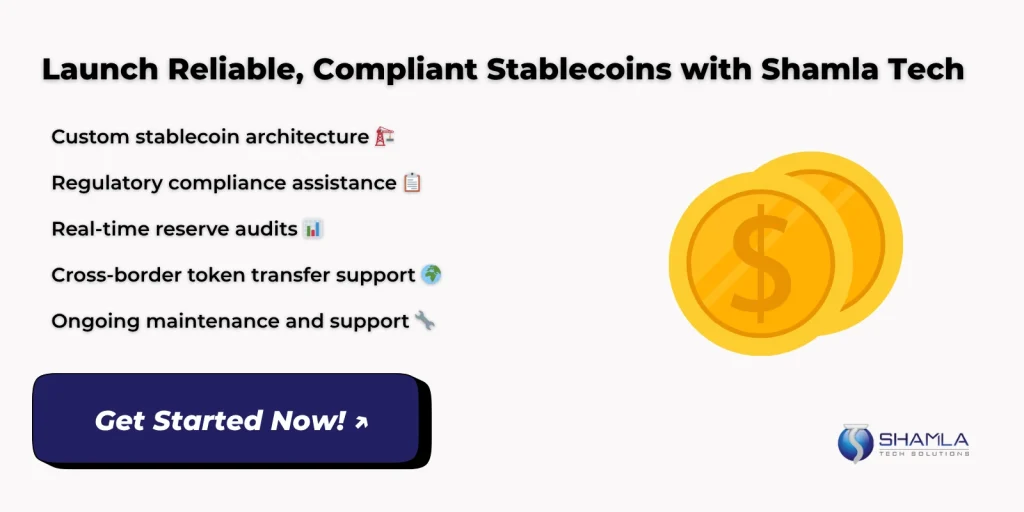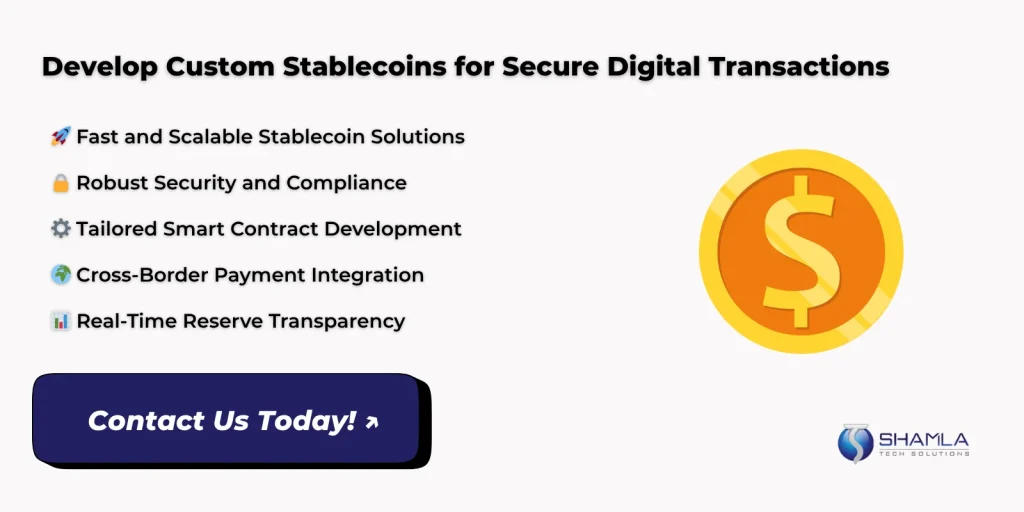What Are Stablecoins and Why They Matter in 2025
Stablecoins are digital tokens tied to real assets like the US dollar or cryptocurrencies. They provide fast transfers between wallets and exchanges without price swings of other coins. Types of stablecoin include fiat-backed, crypto-backed, and algorithmic models. Issuers face stablecoin regulation requiring clear reserve proofs and regular audits. These coins let traders lock value, reduce risks from market moves, and support lending and payments across borders. Investors should study reserve methods, issuer reputation, platform security, and token liquidity.
Stablecoins serve a vital role of stablecoins by linking traditional finance and digital assets. Merchants use them for invoices, remittances, and payroll to avoid volatile prices. DeFi platforms use these tokens for lending, borrowing, yield generation. Compared to other crypto assets, stablecoins maintain value since reserves back them. Tracking the top 10 stablecoins by market cap shows a shift toward transparent reserves and faster transactions. In 2025, these tokens fuel cross-border payments, digital wallets, and programmable contracts without value swings.
Why Stablecoins are getting popular in 2025:
- Regulatory clarity boosts trust, making stablecoins appealing for large investors seeking safe digital value transfer without exposure to price moves or sudden drops in value.
- Faster blockchain networks reduce transaction time and fees, helping users send payments quickly across borders using stablecoins without waiting days for settlement as with banks.
- Integrations into popular apps and wallets let more people hold stablecoins for shopping, remittance, and online services without needing to swap into volatile coins first.
- Decentralized finance platforms offer yield on stablecoin deposits, attracting users who want steady returns without risking value swings common with other crypto assets and transparency.
- Institutional adoption grows as large firms hold stablecoins for treasury, enabling easy liquidity management and hedging without relying on traditional banking systems and compliance audits.
- Emerging markets favor stablecoins to bypass local currency issues, letting people preserve purchasing power and move money safely despite local inflation pressures and financial inclusion.
The Evolution of Stablecoin Regulation
1. The Foundations: Early Stablecoin Oversight and Global Awareness (2014–2021)
2. Market Failures and Regulatory Turning Points (2022–2024)
3. G20’s Push for Global Rule Alignment
4. IMF’s Role in Policy Support and Market Monitoring
5. 2025: The Year of Unified Frameworks and Global Standards
Current Stablecoin Regulation by Region (2025)
United States
In the United States, stablecoin issuers are governed by regulations established under the STABLE Act and the GENIUS Act. These laws require issuers to get licenses, keep full asset backing, and follow clear audits. The STABLE Act demands transparent reserve proofs and regular reports to the regulator. The GENIUS Act adds consumer safeguards and national security checks. Regulators now track every issuer to maintain stablecoin oversight and prevent fund misuse. Issuers must update policies, use compliant systems, and prove liquidity in real time
Issuers follow US crypto regulation by working with banking partners to hold USD reserves. They run weekly audits and share reports with regulators. Platforms must prove stablecoin compliance by showing full reserves, risk controls, and secure wallets. Companies building new tokens study how to create a stablecoin meeting US rules, including governance structures, code checks, and audit trails. Investors pick licensed issuers with clear proofs and proper asset custody. This setup protects users and drives stablecoin development under supervision.
European Union
The European Union’s MiCA rules set clear paths for stablecoin issuers. Under MiCA, issuers must hold full reserves in safe assets and publish regular reserve statements. They register with local regulators, show strong governance, and meet capital requirements. Stablecoin oversight in the EU includes stress tests, risk limits, and clear redemptions for users. Platforms must disclose fees, transaction flows, and audit results. This framework ensures transparency and protects investors by forcing issuers to follow strict rules before issuing any token.
Issuers must meet stablecoin compliance by showing proof of asset holdings and third-party audits. They face penalties for missing reports or reserve gaps. EU banks and crypto firms partner to custody fiat reserves. This setup speeds transactions and protects users. The MiCA rules balance innovation and safety, allowing new tokens under supervision. Developers document code and governance. Investors check issuer track records, audit findings, and redemption plans before holding EUR-backed or crypto-backed coins in this regulated market under compliant protocols.
Asia (Singapore, Hong Kong, Japan)
In Singapore, issuers register with the Monetary Authority and keep full reserves in local banks. They run routine audits and share reserve data regularly. This setup ensures investors see clear proofs and reduces token risk. Hong Kong requires issuers to obtain licenses under new crypto rules, hold reserves in banks, and submit audit reports. Japan’s regulator demands audits and ties reserves to safe assets. These rules offer stablecoin oversight and protect users while boosting confidence in digital coins. Regionally. Strictly.
In 2025, Asia builds channels for stablecoin compliance and cross-border payments. Singapore pilots tokenized bond projects using stablecoins under clear rules. Hong Kong tests regulatory sandboxes letting issuers innovate while meeting risk controls. Japan links stablecoins to yen reserves, supporting local token development and retail use. Regulators share data to track fund flows and detect fraud. This regional approach puts Asia at the front of the role of stablecoins in payment rails, enabling fast transfers while keeping prices steady across jurisdictions.
Middle East & Africa
In the Middle East, regulators adopt stablecoin regulation to protect investors. The UAE allows issuers to operate under virtual asset laws if they keep full reserves in licensed banks and run audits. Saudi Arabia explores frameworks for token development. Bahrain’s regulator demands proof of reserves and risk controls for stablecoin platforms. In Africa, Nigeria and South Africa examine rules to curb fraud while supporting remittances. These steps increase stablecoin oversight but permit pilot projects to test token use in local markets.
Authorities in these regions shape stablecoin compliance frameworks. The UAE held consultations and updated reserve rules. Saudi Arabia plans to link digital riyal tokens with private stablecoins under strict guidelines. Nigeria requires issuers to register with the central bank and maintain capital buffers. South Africa is examining regulations for cross-border token transfers. The Middle East and Africa share data through forums to identify risks. This keeps the role of stablecoins on safe payments while allowing innovation under clear guardrails. Securely. Cooperatively. Efficiently.
Stablecoin Compliance in 2025: What Investors Should Know
1. KYC and AML Requirements
2. Reserve Backing and Audit Protocols
3. Verifying Legal Safety
4. Role of Financial Regulators
5. Due Diligence and Risk Assessment
Opportunities and Risks for Stablecoin Investors in a Regulated Market
1. Yield Opportunities with Regulated Tokens
2. Growing Market Access through Adoption
3. Bridging Finance with Blockchain Use Cases
4. Ensuring Legal Safety and Trust
5. Launching Your Own Stablecoin in a Clear Framework
Conclusion
Stablecoin regulation ensures tokens maintain value while the crypto market offers steady yield and fast transfers. Creating or buying a stablecoin can lock value and access blockchain loans and payments. Low volatility tokens backed by assets reduce risk. Investors gain yield on staking and lending, making stablecoins top asset choice.
Shamla Tech is a stablecoin development company offering stablecoin development services that build compliant tokens. We design smart contract code, set up reserve accounts, and run secure audits. Clients benefit from our expertise in token architecture, legal frameworks, and integration with exchanges.
Contact us today to Develop and Launch your own Stablecoin!






